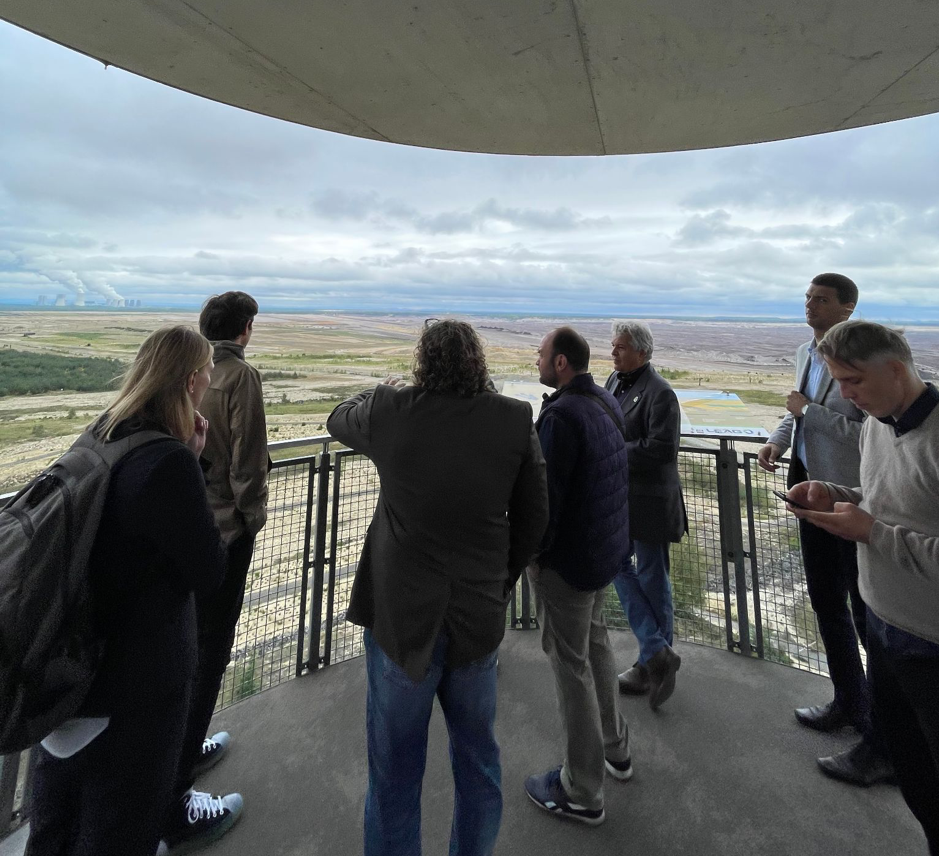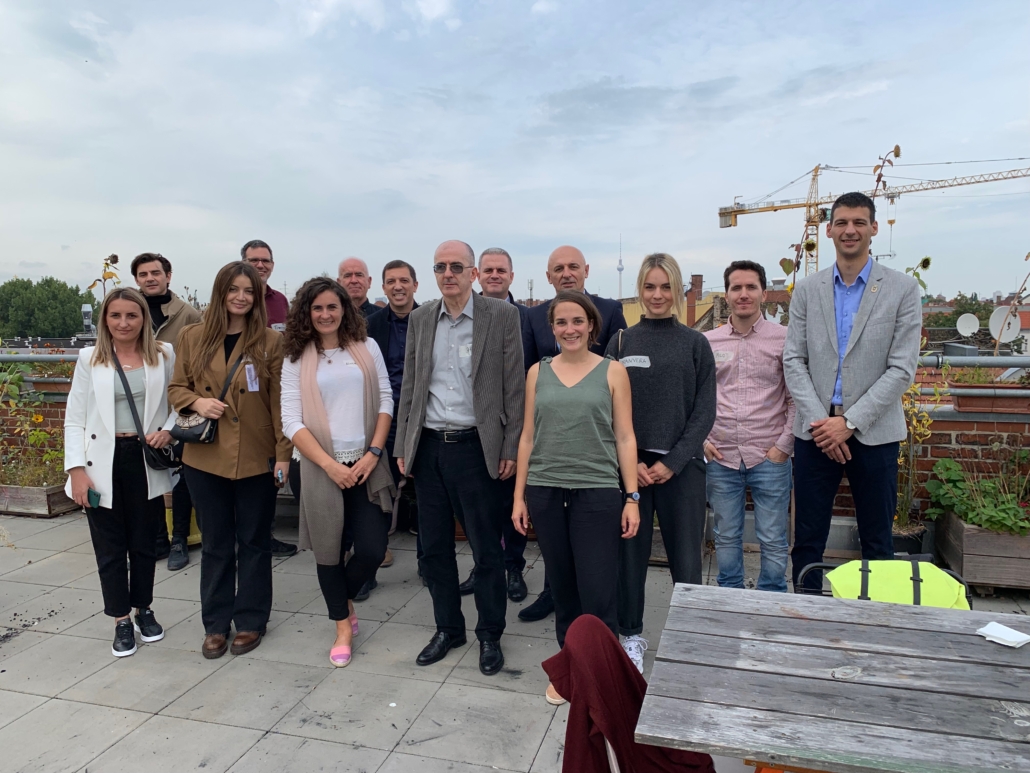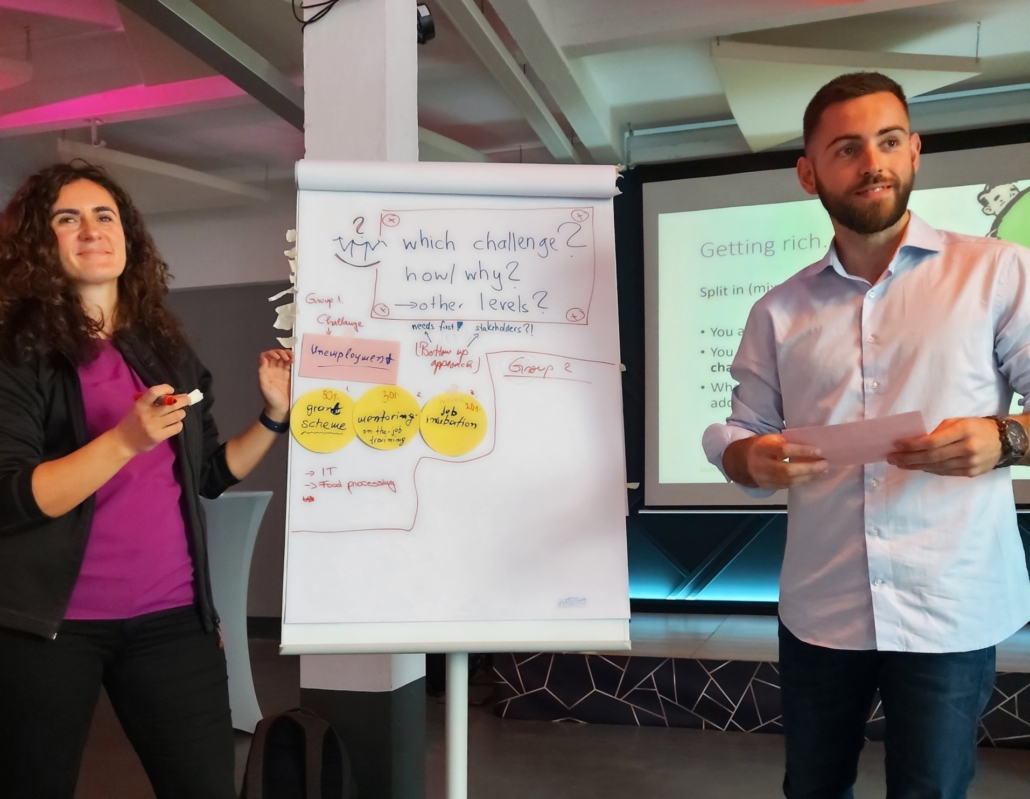Lusatia: What Has Been Learned So Far From Undergoing Structural Change?
From 27th of September until 1st of October, the GreenRuralDeal project went on a journey to explore the transition of the rural lignite-mining region of Lusatia in Germany.

Study visit to Lusatia – what did we learn?
Participants of the study visit were mayors, regional economic development institutions, staff members of municipalities as well as local governance experts from Kosovo, Serbia and Greece – accompanied by the project members of GreenRuralDeal.
As the core of the GreenRuralDeal project are three rural regions (Kamenica in Kosovo, Priboj in Serbia and Western Macedonia in Greece), the study visit aimed to build bridges to identify common challenges as well as strategies for a sustainable and smart transition.
Thus, the participants learned about a) the challenges the Lusatia region and its municipalities are facing, b) the strategies to tackle those challenges and c) how to successfully shape the energy transition on site. Moreover, the participants also learned from each other’s experiences during many discussions and debates between partners and stakeholders from Lusatia. “Our aim was to show how structural change took and is still taking place in Lusatia: Not as a Best practice-example, but as a region full of experience on tackling the challenges of an ongoing transition”, explains project manager Katja Witte from Wuppertal Institute.
What did we learn in detail?
The core of the first day was aimed to get a common understanding about the Lusatia region, but also about the three other regions which are part of the project. Moreover, we met with representatives of the Federal Ministry for Economic Affairs and Energy and of the Federal Ministry for the Environment, Nature Conversation and Nuclear Safety. These explained the course of the political process of the coal phase-out at the national level in Germany and the development and status quo of the associated public funding.

Day two took place in the Lusatian city of Weißwasser: Meeting the mayor of the town in order to understand how dismantling of a city works and how economic development in the transformation can succeed.
The third day started with a workshop in Weisswasser to raise awareness of the things that have been learned so far and to compare and analyze the challenges and opportunities (for structural change) of the region with those of the participants’ regions.

Then we visited the town of Görlitz, where we met the mayor as well as a representative of the county to discuss f.e. on borderline strengths and how to best support municipalities to apply for public funding. On the same day we also visited Siemens Energy, which served as an example of how a manufacturing company that was almost shut down, got transformed to a ‘cooperative platform’ for R&D for decarbonization and new manufacturing technologies.
On day four we visited the ‘Industry Park Schwarze Pumpe’ and met the Mayor of Spremberg, who gave a presentation on Lusatia’s strategy on structural change and the challenges the region is facing because of the Municipality’s high dependence on the coal industry. Afterwards, we met with a representative of the Prime Minister of Brandenburg, for the Region of Lusatia, who gave a more detailed background on challenges as well as opportunities of structural change for the region of Lusatia.
The last day, the internal concluding workshop was held with all participants in order to reflect the impressions of the past days. The purpose was also to share the lessons learned and how to better tackle the transition problems. The participants successfully agreed on a shared vision for their region after structural change.
What happens next?
The group will meet again in November in selected target regions of the project and explore those regions. Core of this second study visit will be the development of specific project ideas and areas of intervention for the regions involved in the project.
